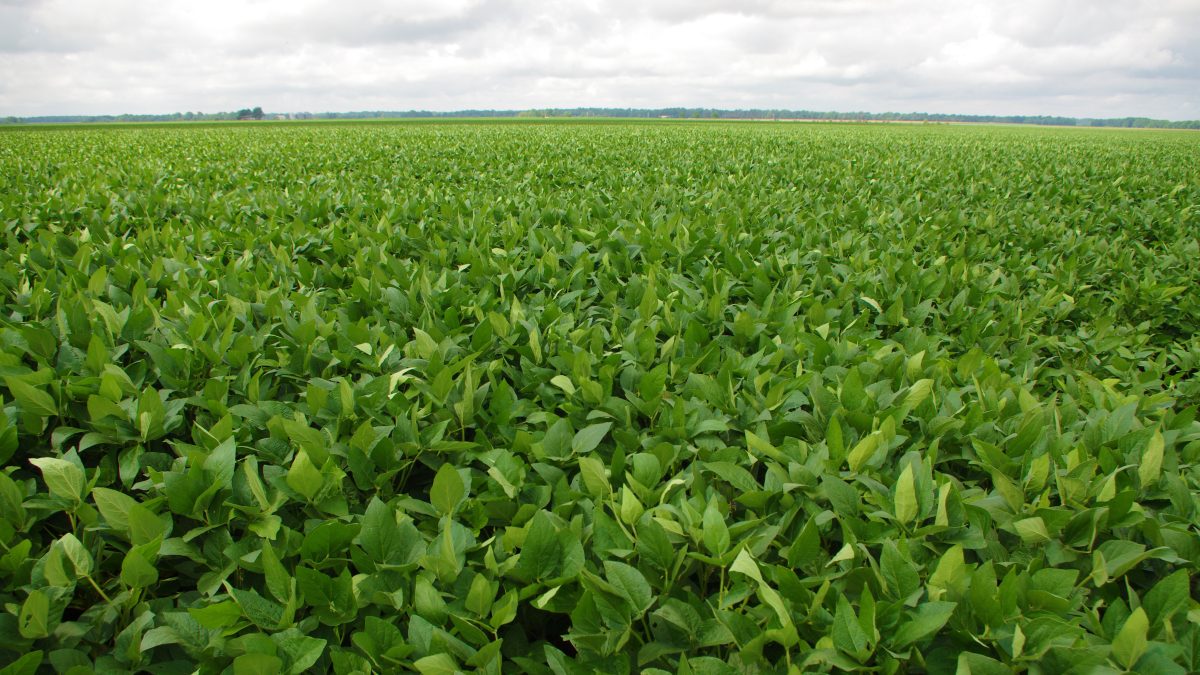Crop Conditions “Worst” Since 2012
TOPICS
Soybeans
photo credit: Arkansas Farm Bureau, used with permission.
John Newton, Ph.D.
Chief Economist
USDA’s Crop Progress reports are based on visual observations from respondents across the country who frequently come in contact with farmers and ranchers growing a crop. These survey respondents visually and subjectively estimate the progress of the crop from planting through various stages of development and along the way evaluate the overall crop condition. These crop scouts have confirmed what many in the industry have anticipated – corn and soybean crops appear to be in the worst condition since 2012.
Fewer Corn and Soybean Acres in Favorable Condition
The most recent Crop Progress report, released July 15, revealed 58% of the 2019-planted corn crop was in good-to-excellent condition as of week 28, up 1% from the prior week, but down 14% from the prior-year and down 13% from the five-year average. Using the June Acreage estimate of 91.7 million acres of corn planted or intended to be planted, current condition ratings imply that approximately 53 million acres are in good-to-excellent condition, down from 64 million acres in similar condition last year. Importantly, the 53 million acres in good-to-excellent condition at this point in the growing season is the second-lowest number of acres in good-to-excellent condition over the last decade, behind only the drought year of 2012, when 30 million acres were in good-to-excellent condition.
For soybeans, the July 15 Crop Progress report revealed 54% of the crop was in good-to-excellent condition, up 1% from last week, but down 15% and 14% from the prior-year and the five-year average, respectively. The estimate of 80 million soybean acres planted implies 43 million acres are in good-to-excellent condition at this point in the growing season – down more than 18 million acres from last year and, as with corn, the second-lowest level over the last decade. Figure 1 highlights the corn and soybean acres in good-to-excellent condition based on the acreage estimate and the July 15 crop conditions ratings.

Poor and Very-Poor Corn and Soybean Acres Increase
Fewer corn and soybean acres in good-to-excellent condition implies more acres are in unfavorable, poor or very-poor condition. The Crop Progress report revealed 12% of the corn crop in poor or very-poor condition, up from 9% in 2018. Based on the acreage estimate, there are more than 11 million corn acres in poor or very-poor condition across the U.S., up nearly 3 million acres from 2018 levels. Illinois leads the nation with nearly 2 million corn acres in poor or very-poor condition, followed by Iowa at 1.4 million acres and Indiana at 1.3 million acres. Across the Corn Belt more than 7 million acres are in poor or very-poor condition, up millions of acres from prior-year levels. Figure 2 highlights the number of corn acres in poor or very-poor condition as of July 14.

As with corn, scouts have visually confirmed that there are millions of soybean acres across the U.S. in poor or very-poor condition. As of July 14, 12% of the soybean crop was in poor or very-poor condition, up from 8% the prior year. Using the June acreage estimate, there were 9.6 million acres of soybeans in unfavorable condition in mid-July, up 2.5 million acres from the prior year. Illinois has the most soybean acres in unfavorable condition, with nearly 2.3 million acres in poor or very-poor condition. Following Illinois are Ohio and Indiana at approximately 1.2 million acres each in poor or very-poor condition, Figure 3.

Combined, there are more than 20 million corn and soybean acres in the U.S. in poor or very-poor condition. Illinois has more than 4.2 million corn and soybean acres in unfavorable condition, followed by Indiana at 2.5 million, Iowa at 2 million, and Missouri and Ohio at 1.9 million each, Figure 4.

Summary
The small corn and soybean acreage in good-to-excellent condition and the large number of acres in poor-to-very poor condition has increased uncertainty in the grain and oilseed complex. Implied volatilities for new-crop corn and soybean futures have more than doubled from the pre-planting levels due to the adverse growing conditions experienced so far this year -- and corn futures had already risen to contract highs prior to the June acreage report.
USDA is currently re-surveying growers to get a better estimate of planted area, and the market is closely following weather conditions and the impact on crop yields. Given corn and soybean crops were planted in staggered stages, the weather will impact the crop differently depending on the stage of development. Additionally, given the crop was planted late in many parts of the country, there are legitimate concerns about the impact of an early frost on crop yields.
These factors combined have led to the most uncertainty about crop conditions, yields and, ultimately, prices since the drought year of 2012. With so much uncertainty– especially for corn -- it’s no wonder farmers with storage are holding on tight to the old crop and anticipating higher prices later in the year.
